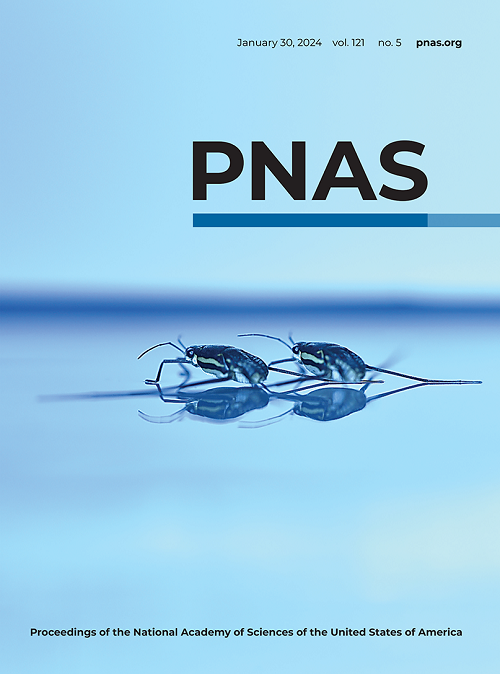感觉神经元的三维染色质图谱显示,轴突再生需要启动子-增强子循环。
IF 9.1
1区 综合性期刊
Q1 MULTIDISCIPLINARY SCIENCES
Proceedings of the National Academy of Sciences of the United States of America
Pub Date : 2024-09-10
DOI:10.1073/pnas.2402518121
引用次数: 0
摘要
成年成熟神经元在体内的三维基因组结构在平衡状态下以及在轴突损伤等医学相关扰动后仍然难以捉摸。在这里,我们通过组合 Hi-C、启动子捕获 Hi-C、CUT&Tag for H3K27ac 和 RNA-seq 等方法,绘制了野生型和凝聚素缺陷型小鼠感觉背根神经节神经元在平衡状态和坐骨神经损伤后的三维染色质结构和基因表达程序,从而填补了这一知识空白。我们发现,参与轴突再生的基因形成了长程、复杂的染色质环,而且再生转录程序的全面诱导需要凝聚素。重要的是,失去凝聚素会导致染色质结构的破坏和神经再生的严重受损。在轴突生长潜力最高的人类胎儿皮质板中,也富含复杂的增强子-启动子环路,而在成熟的成体神经元中则丧失了这种环路。这些数据共同提供了体内成年感觉神经元的原始三维染色质图谱,并证明了依赖于凝聚素的长程启动子相互作用在神经再生中的作用。本文章由计算机程序翻译,如有差异,请以英文原文为准。
Three-dimensional chromatin mapping of sensory neurons reveals that promoter-enhancer looping is required for axonal regeneration.
The in vivo three-dimensional genomic architecture of adult mature neurons at homeostasis and after medically relevant perturbations such as axonal injury remains elusive. Here, we address this knowledge gap by mapping the three-dimensional chromatin architecture and gene expression program at homeostasis and after sciatic nerve injury in wild-type and cohesin-deficient mouse sensory dorsal root ganglia neurons via combinatorial Hi-C, promoter-capture Hi-C, CUT&Tag for H3K27ac and RNA-seq. We find that genes involved in axonal regeneration form long-range, complex chromatin loops, and that cohesin is required for the full induction of the regenerative transcriptional program. Importantly, loss of cohesin results in disruption of chromatin architecture and severely impaired nerve regeneration. Complex enhancer-promoter loops are also enriched in the human fetal cortical plate, where the axonal growth potential is highest, and are lost in mature adult neurons. Together, these data provide an original three-dimensional chromatin map of adult sensory neurons in vivo and demonstrate a role for cohesin-dependent long-range promoter interactions in nerve regeneration.
求助全文
通过发布文献求助,成功后即可免费获取论文全文。
去求助
来源期刊
CiteScore
19.00
自引率
0.90%
发文量
3575
审稿时长
2.5 months
期刊介绍:
The Proceedings of the National Academy of Sciences (PNAS), a peer-reviewed journal of the National Academy of Sciences (NAS), serves as an authoritative source for high-impact, original research across the biological, physical, and social sciences. With a global scope, the journal welcomes submissions from researchers worldwide, making it an inclusive platform for advancing scientific knowledge.

 求助内容:
求助内容: 应助结果提醒方式:
应助结果提醒方式:


